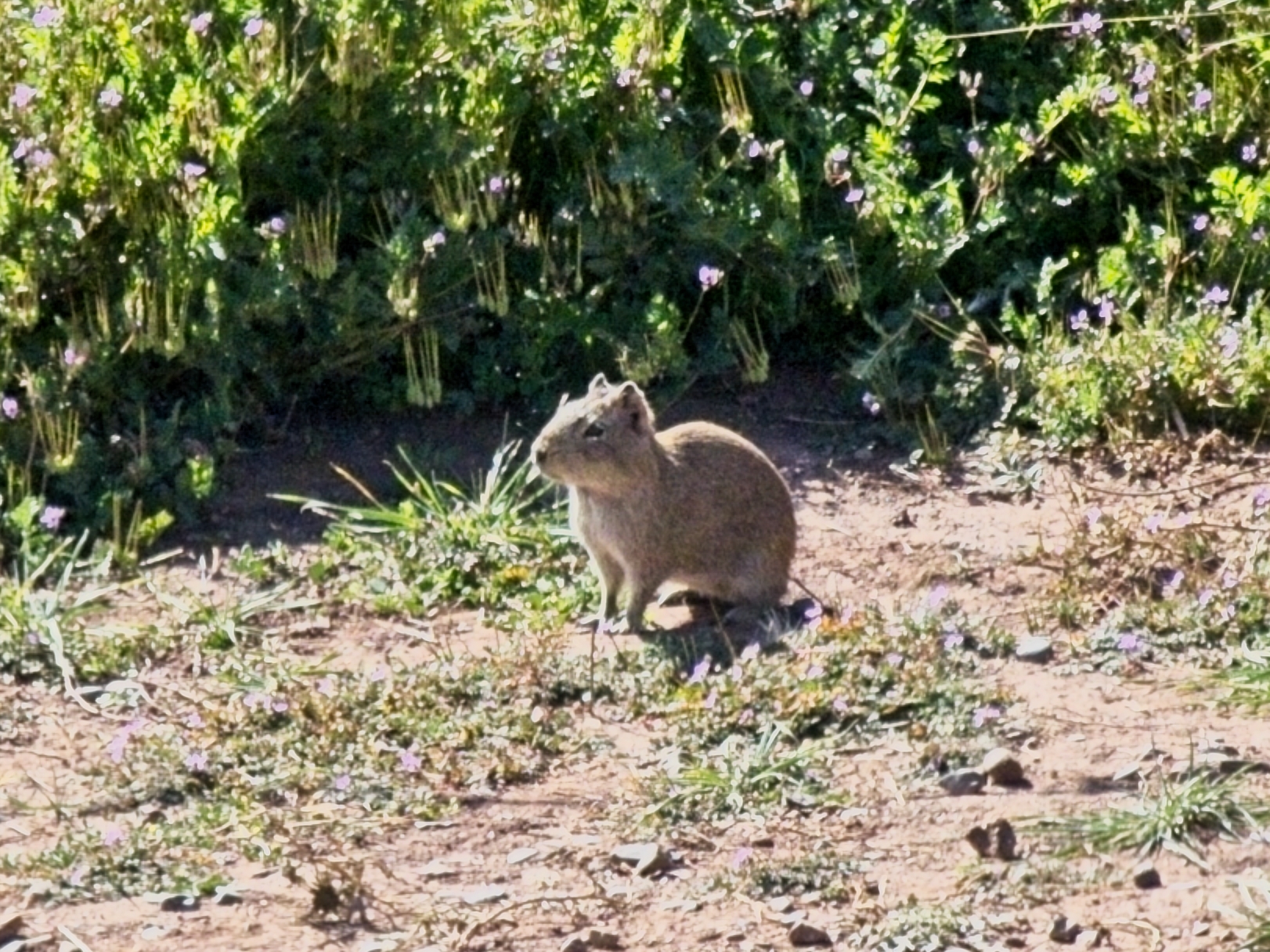May 22, 2025 to May 24, 2025
Tiwanaku
Thursday the 22nd of May 2025
Leigh was feeling somewhat better this morning despite not eaten anything the previous day. So we packed up and headed down to the the border post even thoughher "breakfast" consistedof a couple of simple galletas. At one of the many money changers I changed one half of the last Soles I had into Bolivianos getting about 50% better than the official rate. Exiting Peru took about ten minutes with the short queue moving quickly.
The Bolivian side was somewhat more chaotic with a single queue handling both exits and entries. I used the delay to change the rest of my Soles getting about 60% better than the official rate. Apparently I should get over 100% of the official rate when exchanging US dollars - I have a stash of those for later in the trip.

| Heart | 1 | Comment | 0 | Link |
Once the formalities were over we had a good road with a great shoulder for the first twenty or so kilometers in Bolivia. At the town of Guaqui the road deteriorated a bit but we still had a wide but rather rough shoulder.

| Heart | 5 | Comment | 0 | Link |
A few kilometers out of Tiwanaku we took a short cut on a simple dirt track. As we were checking the map before starting off on the track Leigh noticed her front wheel deflating slowly. Too close to swop the tube and too far to walk so the hand pump got used a few times to allow us to finish the day.

| Heart | 2 | Comment | 0 | Link |
We checked into the large and rather rundown Akapana Hotel which stands right next to the main archeological site and the museums. By all accounts it's the best accommodation in town and at 240 BOB (about $9 US at the Blue Dollar rate) per night including breakfast is a good deal. All the nearby restaurants were already closed with the exception of a dodgy looking place advertising that they still had Milanesas available (more on this later).

| Heart | 0 | Comment | 0 | Link |
Friday the 23rd of May 2025
This time it was me who got the bad piece of chicken. Before yesterday had become today my Milanesa had made its presence known. Suffice to say I had almost no sleep last night.
Nonetheless I managed to force a bit of the simple breakfast down and we headed off to the main archeological site, Akapana. The next two hours were a bit of a blur for me and by eleven o'clock I had retired to bed. Leigh carried on and had an enjoyable morning, far more enjoyable than if she were stuck I my presence.

| Heart | 0 | Comment | 0 | Link |

| Heart | 0 | Comment | 0 | Link |

| Heart | 3 | Comment | 0 | Link |
After Leigh returned I roused myself and we went off for some lunch which was a rather thin but very tasty piece of beef (I'm rather nervous of chicken right now), some vegetables and pureé de papas, a welcome change from rice and badly cooked chips. This made me feel a lot better but I still slept for the rest of the afternoon.
We were supposed to be leaving for El Alto tomorrow but, due to me being only half human and given that there is still so much to see here, we have delayed our departure by a day.
Saturday the 24th of May 2025
I woke up this morning feeling right as rain.
After breakfast it was off to the second archeological site, Pumapunka. This is supposedly the last of the Tiwanaku constructions. Along with the Wari from further north, the Tiwanaku civilization lasted from about 300AD to 1000AD. The Inca civilization only arose 400 years thereafter and lasted less than 150 years. The reason for the Wari and Tiwanaku declines isn't certain but increased aridity was the probable cause. This is interesting to me because this predates the start of the mini ice age, one of the strong motivators for western Europe setting off to conquer the rest of the world, by about 300 years.

| Heart | 4 | Comment | 0 | Link |
Pumapunka is not as dramatic as Akapana but what struck me was the well developed drainage system and moat along with some some enormous stones platforms, beautifully crafted, that form part of the pyramid.

| Heart | 3 | Comment | 0 | Link |
Then it was onto the two museums. The second, the Museo Litico, held the jewel in the crown, the Bennet Monolith. This is the largest known carved monolithic human statue in the western hemisphere. Weighing about 20 tonnes and standing 7.3 meters tall, it is an imposing piece of stone to stand next to. It was "discovered" by William Bennet in 1932 but knowledge of its existence in modern times probably dates from 1903.

| Heart | 1 | Comment | 0 | Link |
Tomorrow we carry on to El Alto and, by extension, La Paz. We need to do some shopping in La Paz and to visit the immigration office to hopefully have another 30 days added to our visa. A well known "wife-breaker" hill (to steal a term used by another cycle tourist) lies between here and there so we are anticipating a hard day.
Today's ride: 46 km (29 miles)
Total: 651 km (404 miles)
| Rate this entry's writing | Heart | 5 |
| Comment on this entry | Comment | 0 |











